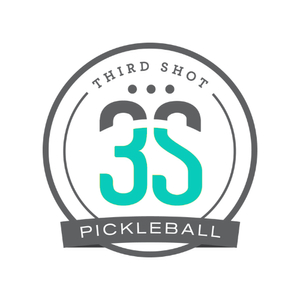When I teach pickleball clinics or offer private lessons, one of the big questions that comes up has to do with grips. Not just how should a player hold the paddle, but should they change their grip during play?
The short answer is: it depends.
First, like with any element of technique, we should ask ourselves why the grip matters. What are we trying to get it to do for us? I see three important elements worth considering:
Stability: We want to use a grip that will allow us to make solid contact with the ball without having the paddle twist in our hands or require excessive movement to execute the shot. Please don’t confuse this with grip strength – that’s a different issue altogether. But if we want to be a solid, consistent player, we should look to hold the paddle in a way that can be stable through impact even when hitting higher speeds.
Versatility: One of the fun things about pickleball is how many different kinds of shots a player can hit. A grip that allows us to hit a greater number of different shots is probably preferable to one that allows us to hit fewer. Simply put, it’s better to use a grip that gives us more options to draw from when we’re on the court.
Safety: While this is probably the least sexy of the categories, using a grip that is more likely to keep you injury-free makes a lot of sense and should be a consideration when deciding how to hold the paddle.
Now that we’ve identified our key considerations, let’s look at some of the most prominent grips on both the forehand and backhand.
Continental Grip: Also known as a hammer grip, the grip is found when holding the paddle with the "V" of your hand between your thumb and index finger right on top of the handle – like if you were holding a hammer.
When contact is made out front between your body and the net, this grip tends to open the paddle face just a little bit which is useful when playing a ball with an arc (think about dinks, drops, lobs, and even some serves or returns) or when looking to swing slightly down on the ball to create backspin.
Eastern Forehand Grip: This grip is similar to shaking hands – where your hand is just slightly on the side of the handle with the palm facing toward the net.
The Eastern Backhand Grip: This grip is identified by having the index finger knuckle on top of the paddle handle.
Bonus Grip: Semi-Western: This grip is found when the hand is even further behind the paddle handle when hitting a forehand, verging on below it.
So what to do?
When I started in pickleball, I advocated for the continental grip as a primary grip. This was mainly because of its versatility and the ability to hit a wide variety of shots without changing grips. However, as the sport changes, becomes faster and involves more topspin, I no longer think the continental grip makes the most sense as the default.
When it comes to powerful shots like serves and third shot drives, the eastern forehand grip almost always makes the most sense on the forehand side: it’s strong, easier to keep the ball down and friendly to topspin.
The trouble is with the backhand. The eastern forehand grip does not do well when hitting from the non-dominant side. In some cases there is time to change grips when preparing to hit a backhand. I’m thinking about getting ready to hit a drop or even a return of serve – moments when the ball is coming from a long way away and there is time for a quick grip change.
But when players are at the net exchanging volleys quickly, usually there is no time to change between a grip on the forehand side in the backhand. And this is exactly why we’re seeing so many players hit two-handed backhands from up at the net!
What does this mean for you?
I think you should consider this an invitation to go out on the court and experiment! Try using different grips on the forehand and backhand sides. Be aware that grip changes are often major surgery, so I don’t recommend this kind of experimentation in a match you care about winning. But whether it’s with a friend, a coach, a ball machine, or even a wall, there might be some value in playing around with different grips and seeing what each can do for you. And don’t worry if you haven’t hit two-handed backhands at the net before – neither had the pros, until they did…
By Mark Renneson





